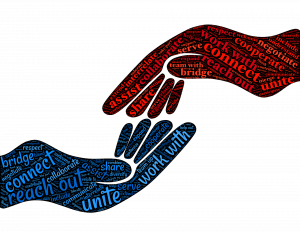As I learnt in our case study group collaborating with others is not always easy, even if one does come willing to collaborate. Our group did not function as well as I had hoped as a collaborative group. People seemed to just work cooperatively posting their own research and people took turns volunteering to coordinate and post the case studies. Whilst we did manage to create case study pieces that were of a high standard and explored many issues, I felt that there was a synergy missing within the group. Members were friendly and communication was generally clear between postings on the blog and wiki so the dynamics may have been caused by a lack of trust and time issues or a lack of clear roles. It was only towards the end of the group work I felt the group started to trust each other enough to comment on posts and interact more. One person (not me) emerged as a clear leader within the group. She was the first to set up the blog pages and the person who set up the wikis each week for the case studies. This was a good example of servant leadership as setting up everything allowed the group to function better and start contributing each week. This person also had leadership traits of being approachable and people seemed to turn to her for advice within the group. From this group experience, I have several takeaways for the future.
- Working online can help with communication if somebody misses something, it also allows all to contribute.
- Establishing rules for deadlines also helped – for example please post superficial and deeper issues by the 5th of September.
- True collaboration takes trust and time to develop, I may need to review the Bastow Institute’s video on developing trust.
Even though my group wasn’t as collaborative as I had hoped, I learnt many lessons from the case studies. The standouts were scenarios that highlighted practices I hadn’t thought of before. They were:
- It is important to link the library outcomes and vision to the school’s outcomes and visions.
- Promote the library to staff as well as students – collaborate to help staff achieve their objectives. Choose 1 teacher to work with at first.
- There are a variety of ways to promote the library.
- And one I need to be regularly reminded of – although we may think we can do it all, we can’t and need to work smarter not harder or we will burn out.
One area of the modules I found extremely useful was conflict management as it is not an aspect of leadership I like to deal with, as evidenced here on my blog post ‘Conflict’ (Silver, 2019, September 21).
Learning from others in the forums and thinking about my own leadership experiences has been beneficial in cementing theory into practice, such as the benefits of networking and teacher librarian conferences ( Silver, 2019, September 5).
Looking back at the subject the biggest takeaway for me is that the TL can lead from the middle in a variety of ways and I will be taking many of these ideas with me into a TL role in the future.
References:
BastowInstitute. (2015, July 27). Building Trust and Collaboration – Tracey Ezard [Video file]. Retrieved from https://youtu.be/kUkseAdKyek



